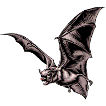Museum, University of Nebraska State

University of Nebraska State Museum: Mammalogy Papers
Document Type
Article
Date of this Version
1-17-1975
Citation
Occasional Papers / Museum of Texas Tech University (January 17, 1975) number 26, 22 pages.
Abstract
This is the fourth in a series of papers by Jones, et al., dealing with the systematics and distributional status of mammals on the Yucatán Peninsula of México. The present contribution lists 24 native species belonging to the orders Carnivora (18 species), Sirenia (one), Perissodactyla (one), and Artiodactyla (four). Among the carnivores there are one canid, six procyonids, six mustelids, and five felids, whereas the Artiodactyla is represented by two families (Tayassuidae and Cervidae), each with two species.
The Yucatán Peninsula as treated in this series of papers includes the Mexican states of Campeche and Yucatan, and the Federal Territory of Quintana Roo; physiographically the peninsula also includes portions of Guatemala and British Honduras (later known as Belize). The Recent mammals of the Mexican part of the peninsula were treated in an early work by Gaumer (1917) and sub-Recent faunas were studied by Hatt et al. (1953). The physiography and vegetation of the region have been described previously by Duellman (1965, 1966), Jones, et al. (1973), Klaas (1968), and Paynter (1955).
Many specimens reported in this paper were collected in the summer of 1962 by a field party under the direction of W.E. Duellman and also by a survey team, led by J.K. Jones, Jr., that collected terrestrial vertebrates and their ectoparasites under a contract (DA-49-193-MD-2215) from the U.S. Army Research and Development Command. Also, Percy L. Clifton, field representative of the Museum of Natural History, the University of Kansas, obtained mammals on the peninsula from mid-December 1962 to June 1963.
Institutions from which specimens were examined are the Museum of Natural History at the University of Kansas, the National Museum of Natural History, Washington, D.C., and the British Museum (Natural History). Most place-names mentioned in text are located on an accompanying map.
Included in
Biodiversity Commons, Latin American Studies Commons, Terrestrial and Aquatic Ecology Commons, Zoology Commons


Comments
Copyright 1975, Museum of Texas Tech University. Used by permission.